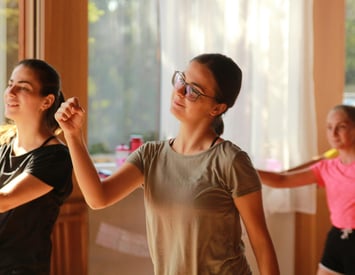Dance as Therapy: Move Your Body, Free Your Mind
Dance as Therapy: Move Your Body, Free Your Mind. Discover how dance can be a powerful tool for mental and physical health, backed by science.
Health Is Life
1/21/20252 min read
Dance is more than just a form of artistic expression or physical activity. It is increasingly being recognized as a therapeutic practice with profound benefits for both the body and mind. Whether you enjoy salsa, ballet, or freestyle, dancing can transform your mental and physical health. Here’s what the science says about the healing power of dance.
The Benefits of Dance Therapy
Stress Reduction:
Dancing helps lower cortisol levels (the stress hormone) and triggers the release of endorphins, improving mood and reducing anxiety. According to studies, engaging in rhythmic movement reduces mental fatigue and promotes relaxation.Improved Emotional Well-Being:
Dance allows individuals to express emotions non-verbally, providing a safe outlet for feelings. This is particularly beneficial for those dealing with trauma or emotional blockages.Cognitive Boost:
Research shows that dancing stimulates brain regions responsible for memory, coordination, and focus. Regular participation may reduce the risk of cognitive decline, including conditions like Alzheimer’s disease.Social Connection:
Group dance classes foster a sense of community, improving social bonds and reducing feelings of loneliness. The shared experience of movement can be especially healing for individuals struggling with isolation.Physical Health:
Beyond mental health, dance improves cardiovascular health, enhances flexibility, and strengthens muscles. It’s a fun way to stay active and maintain a healthy weight.
How to Incorporate Dance as Therapy
Join a dance class in your favorite style (e.g., Zumba, contemporary, or ballroom).
Dedicate time at home to free movement while listening to your favorite music.
Consider dance/movement therapy sessions led by certified therapists, especially if you are dealing with trauma or mental health issues.
Conclusion
Dance is a holistic form of therapy that nourishes the body, mind, and soul. Whether you’re looking to de-stress, boost your mental clarity, or simply have fun, dance offers something for everyone. So, turn up the music and let your body move—it’s time to dance your way to well-being!
What is your favorite way to dance? Share your experiences in the comments below!
Scientific References
Karkou, V., & Meekums, B. (2017). "Dance movement therapy for depression." Cochrane Database of Systematic Reviews, (2), CD009895.
Quiroga Murcia, J. A., Kreutz, G., Clift, S., & Bongard, S. (2010). "Shall we dance? An exploration of the perceived benefits of dancing on well-being." Arts & Health, 2(2), 149-163.
Kattenstroth, J.-C., Kolankowska, I., Kalisch, T., & Dinse, H. R. (2010). "Superior sensory, motor, and cognitive performance in elderly individuals with multi-year dancing activities." Frontiers in Aging Neuroscience, 2, 31.
Pinniger, R., Brown, R. F., Thorsteinsson, E. B., & McKinley, P. (2012). "Argentine tango dance as a therapy for depression." Complementary Therapies in Medicine, 20(6), 377-384.


